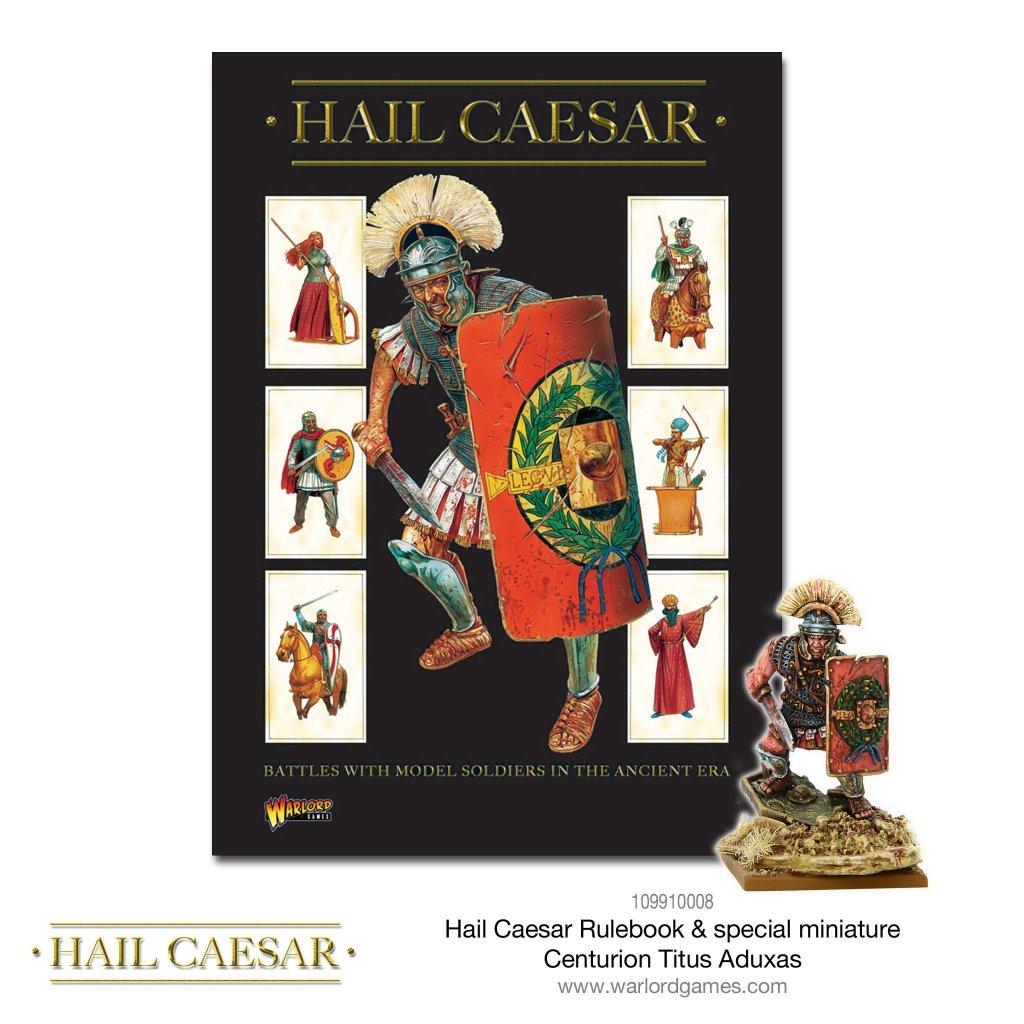
The standard bearer for miniature military wargames and models, the multi award winning Warlord Games offers gamers, modellers, painters and collectors an exciting and extensive product range. Prolific in its creative output, Warlord Games provides game systems and models for World War II (Bolt Action), the ‘Black Powder’ era (1700 – 1900), the ‘Pike & Shotte’ period (1400 – 1700), and the early bronze age (3000 BC) through to medieval knights (1400) with Hail Caesar. The worlds of science fiction and fantasy are not ignored either, with Warlord Games offering Beyond The Gates of Antares and Warlords of Erehwon, respectively. Further to this, the company has license agreements for Strontium Dog, Judge Dredd and Doctor Who.
I have previously written a multipiece blog feature on the legendary games designer Rick Priestley, a man’s whose creative career stretches back to the late-1970’s, and who is responsible for writing and collaborating on many of Warlord Games’ systems and publications. Rick kindly provided me with more of his time as I wrote pieces on Black Powder and Warlords of Erehwon. A glutton for punishment, he agreed to me posing him further questions, this time on Hail Caesar.
Read my review of Hail Caesar HERE.
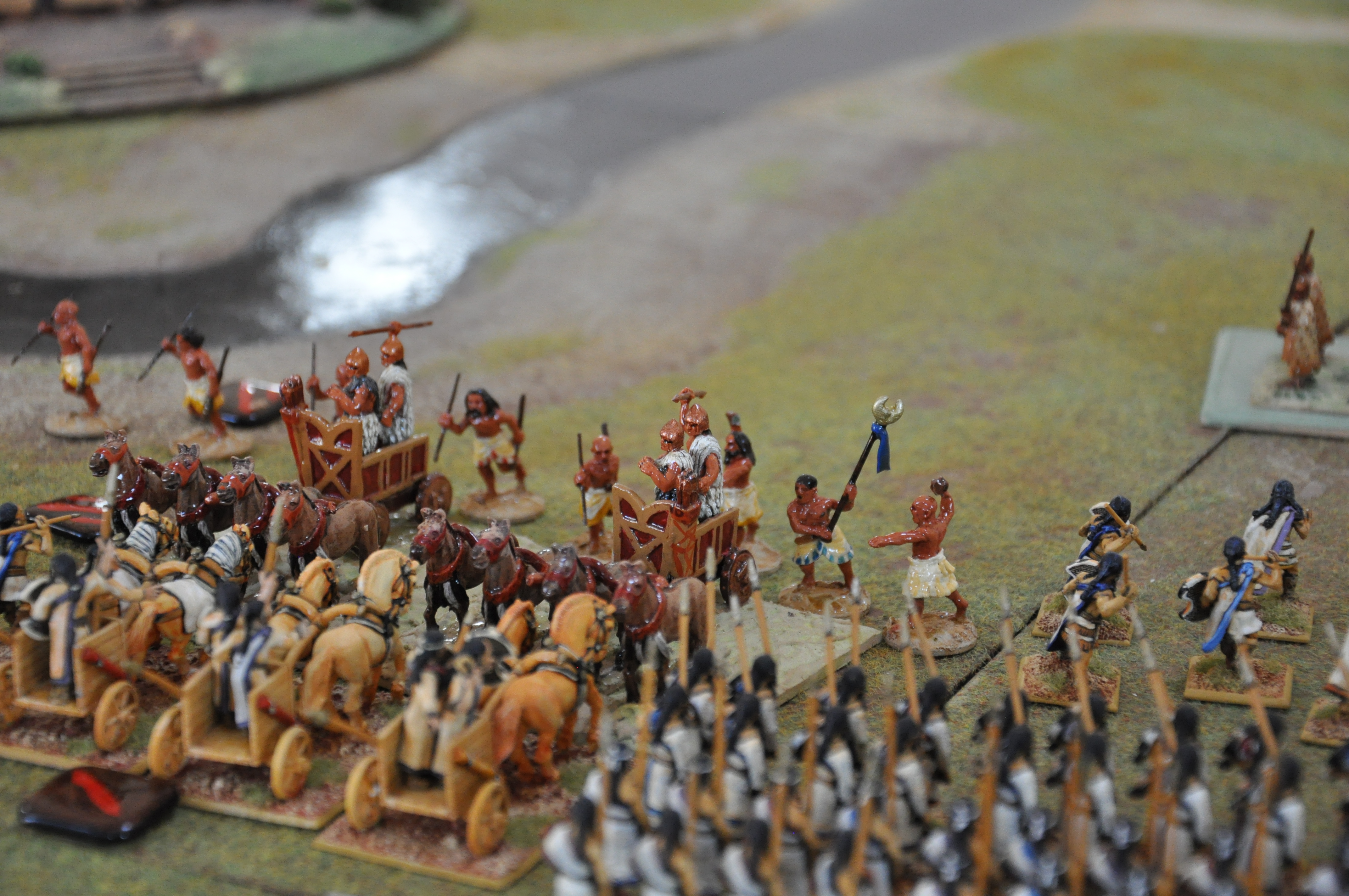
Black Powder seems to have played an important role in the development of Hail Caesar, I asked Rick what it was about this game that he felt drawn back to. Further to this, Rick has previously talked about utilising an engine when designing a game, I wondered how this worked with Hail Caesar.
Rick Priestley: Pretty much exactly that – Hail Caesar is an adaptation of Black Powder to play ancient and medieval battles. Black Powder evolved as a multiplayer game – 3 or 4 a side usually – for large battles that could be fought out over an evening in a reasonably rapid and relaxed fashion. Black Powder is primarily a social wargame – the way everything works assumes the players are friends rather than opponents. Having come up with a system that ticked all those boxes, and one with which we were all familiar, it just made sense to adapt it to play ancient and medieval games. Now I have to say my main interest is this field is ancients and especially Romans and the first centuries AD, whilst the Perry’s are medieval enthusiasts, so I wanted something that would span both fairly easily.
Rick has worked on other historical systems, such as Warhammer Ancient Battles, as well as different games for Warlord Games, I asked Rick what it was that he especially enjoyed about writing historical wargaming rules.
Rick Priestley: Good question! I’m not sure whether is not more a case of writing rules to play the games that my friends want to play – and that just happens to be mostly historical games. I’ve always been broadly interested in history and military history, and especially in ancient history – that is why I enrolled for a degree in ancient history and classics – which I later switched to archaeology and that’s what my final degree was in. Yes it was a long time ago I know – but I’ve maintained an interest in ancient history and warfare as well as archaeology and to some extent anthropology. So writing wargames rules is an expression of that interest I suppose.
Hail Caesar covers biblical times through to the Crusades, I questioned Rick on how he covered all the different races and factions involved and whether he had any favourites.

Rick Priestley: Well as with Black Powder the ruleset is broadly based and idea is that players will tweak the rules with exceptions, special rules and such details as make sense for a particular era or battle. So I never set out to represent one aspect of ancient warfare in detail, although I think we included enough examples of special rules and troop types to cover the whole period in the broadest sense. It helps that the troop types are functional rather than literally based on armour or formation, for example, the difference between heavy and medium infantry is one of vulnerability only, but this makes a huge difference in terms of the balance between missile-fire and hand-to-hand combat. If I have a favourite is has to be Romans – Romans and the Claudian Invasion and conquest of Britannia – and more generally the world of the early centuries AD.

Age of Caesar – Hail Caesar supplement. Copyright: Warlord Games. 
Shieldwall – Hail Caesar supplement. Copyright: Warlord Games. 
Britannia! – Hail Caesar supplement. Copyright: Warlord Games. 
Age of Bronze – Hail Caesar supplement. Copyright: Warlord Games.
From Shield Wall to Britannia, Age of Bronze to Age of Caesar, Hail Caesar has several great supplements, such is the enthusiasm for the game amongst wargamers. I wondered if Rick had any idea of how popular Hail Caesar would become when he first wrote the game, and how it feels to see all the different supplements and addons.
Rick Priestley: It’s great to see others taking up the challenge of providing detailed rules, scenarios and additional material such as campaigns, skirmish gaming and so on. When Hail Caesar came out it was one of a number of games that were all touted as ‘the next WAB (Warhammer Ancient Battles)’. When Games Workshop pulled the rug from beneath the feet of their historical games publishing – always seen as little more than an indulgence and actively discouraged by the senior management – it meant the end of support for WAB. WAB was still very popular, but there was a feeling amongst players that it was time to move on.
At the time there was a new game from Osprey called Fields of Glory (FoG) which captured the market for tournament style play (largely in 15mm) and various ‘WAB-like’ rules which aimed at taking the place of the defunct game. I thought the market was pretty well catered for, so I didn’t even think in terms of writing a successor for WAB. Instead, I considered Hail Caesar to be a different kind of game, rules for players who wanted to play large battles with multiple players on each side, the same as Black Powder. I guessed Warlord would be able to make a success of it because it suits their style of gaming, and I knew they’d be able to shift a reasonable volume of books – enough to justify the print run. I’ve always seen Hail Caesar as a club game – a set of rules for playing big battles on big tables – so I didn’t imagine it would ever become a ‘standard’. I don’t think Hail Caesar has influenced the tournament style of ancient wargame, which is still mostly 15mm and element based – like FoG, the original De Bellis Antiquitatis (DBA), and Mortem et Gloriam (MeG) which is becoming popular amongst the 15mm competition crowd.
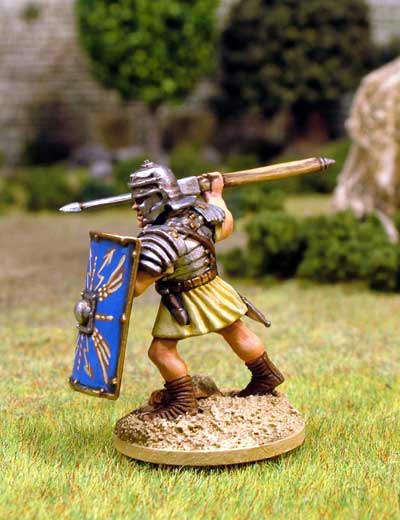
Roman warrior. First plastic kit produced by Warlord Games. Sculptor: Bob Naismith. Copyright: Warlord Games. 
Roman warrior. First plastic kit produced by Warlord Games. Sculptor: Bob Naismith. Copyright: Warlord Games. 
Roman warrior. First plastic kit produced by Warlord Games. Sculptor: Bob Naismith. Copyright: Warlord Games.
More than a decade ago now, Warlord Games’ first ever release was the wonderful Bob Naismith-sculpted plastic Romans set, however Hail Caesar wasn’t released until a few years later (2011). I wondered if this was simply down to release schedules and things needing to be put out in a particular order.
Rick Priestley: I don’t think there was much joined-up thinking going on when Warlord Games started. John (Stallard) and Paul (Sawyer) began with almost nothing and had to build up a business from scratch. So a lot of it was down to opportunism. Remember, those Romans were actually only the second plastic kit released for historical gamers (beaten to it by a matter of weeks by the Perry’s ACW set). They are quite old now – venerable warriors to be sure. As I remember, John thought that it was important to kick off with something that would sell in fairly large numbers because the investment was so huge. He settled on Romans for that reason – perennial favourites and you do need lots to make an army! In fact, the Perry’s and I had often discussed making a plastic Roman set under the aegis of Warhammer Historical, but when the Perry’s set up Perry Miniatures they diverted their efforts into that. So, it was just that idea of making something that would sell well – which is rather important when you’re betting your future on something.
When Warlord was set up there was also the possibility of buying Warhammer Ancient Battles from GW or obtaining a licence. That didn’t work out because GW would never want to share the Warhammer brand. Instead it was agreed that John would take Black Powder, which Jervis and I had intended would be published by Warhammer Historical. Given the way things turned out I’m rather pleased that John rescued it – otherwise I don’t suppose either Black Powder or Hail Caesar would ever have seen the light of day!

Model converted by Nigel Stillman. Photo copyright: Rick Priestley. 
Models converted by Nigel Stillman. Photo copyright: Rick Priestley.
Much like Black Powder, Hail Caesar is ideally suited to multiple players, I wondered how the playtesting for the game progressed and how Rick gauged all the different feedback from those involved.
Rick Priestley: We just played a lot of games amongst our circle – which is what I always do – I sometimes think there’s too much emphasis on ‘testing’ rather than ‘playing’. The process of play will always throw up any issues in the rules and usually within the text where players are sufficiently interested to engage with it. I have a few friends who live further away – different continents in some cases – who are always willing to take on a manuscript copy and either read it and comment or sometimes play and garner comments from their group of players. With rules that aim to be a standard for competition it’s obviously important that you do a lot of blind testing with a variety of players groups, in which case you have to sort through the feedback and address concerns and issues. With the second edition of Antares – which hasn’t yet been released – Tim Bancroft organised a large and dispersed team of contributors who provided feedback which he and I dealt with together. That’s a good way to do these things because it shares the job, and you can bounce ideas and solutions between you without getting lost down one of those rabbit-holes of logic that can tie you in knots if you’re not careful.
With Hail Caesar it was more a case of writing down the rules we were already playing. You also have someone copy edit the text – because that’s a necessity with any book. Our copy editors are also wargamers, so when they come across a rule they think is unclear or contradictory they will spot it, where a more conventionally trained proof-reader might not. Wargames rules also have a particular language that isn’t exactly standard English but which saves a lot of lengthy text. For example we know what a dice is (we also know that ‘die’ is singular but consider that pedantic… well I do anyway 😉 ) and we know what we mean by ‘roll a dice’; we don’t have to define what a dice roll is although I have come across situations where someone felt it necessary to do so. That’s not exactly play-testing but to my way of thinking the ‘rules’ are ‘text’ – I expect the text to fulfil the intent of the rules – so the two are connected. Sometimes the editor or proof-reader will find something that stimulates a discussion of the intent of the rule and you end up re-writing the rule as a result. So, the feedback ranges from observing player activity all the way to discussing the semantics of the text.
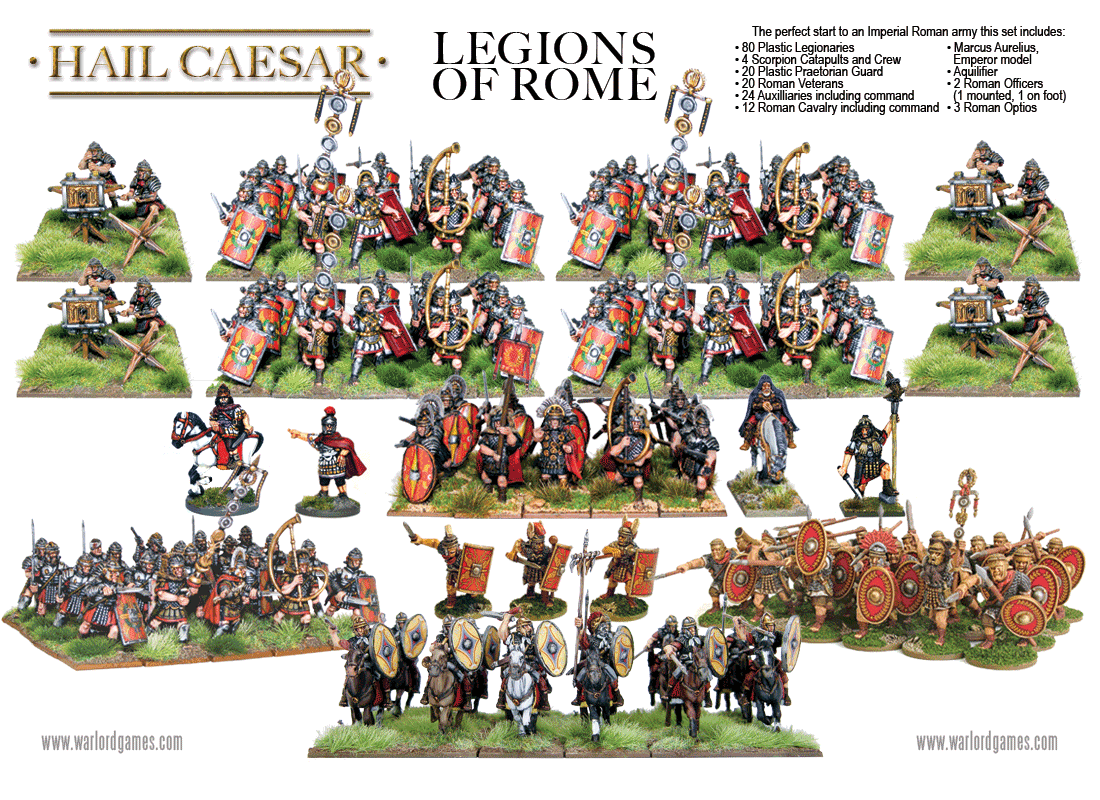
Rick is a big enthusiast of ancient Rome and the the early centuries AD generally, I asked him to comment on what draws him so much to these things.
Rick Priestley: Possibly because I’m from Lincoln and we were taught this sort of thing at school because of the city’s association with the Romans. The IX Hispana Legion was stationed at Lincoln before moving up to York. There are numerous Roman ruins in the city including Newport Arch, one of the 3rd century gateways to the city, which is reckoned the oldest arch in the country that still has traffic running beneath it. I remember following the remains of Roman roads on our bicycles when we were kids. Where my parents lived was just off the Fosse Way – the original route is still preserved quite well all the way from Lincoln to Newark although one or two roundabouts have sprung up in the last few years.
It’s also an interesting period of history and well documented compared to the later Roman era. When you think of classic Romans this is the period you are thinking of, with poster-boys like Caligula and Nero, military leaders like Vespasian and Trajan, and battles involving barbarians in the west and the (Arsacid) Persians in the east.
Rick has previously mentioned the abandoned idea of a fantasy version of Hail Caesar, these ideas went on to find a home in Warlords of Erehwon. I asked Rick if there any plans to revisit the idea of modifying Hail Caesar, be it for a fantasy game or otherwise.
Rick Priestley: Not so far – maybe one day! Most fantasy ‘battle’ gamers come from Warhammer and are used to that one-on-one style of game. Games Workshop encouraged a certain kind of game play – bigger, tougher, more monstrous – that came to dominate Warhammer. I think that was down to the way it was sold and promoted in the shops, and ultimately the studio was obliged to make products that supported that style of game. So, ‘here’s yet another hugely powerful character on a vast monster with lots of special rules that’s going to pulverize your opponent.’ There was very little narrative in the games or tactical interest in the game play – just rules manipulation aimed at getting your ‘killer’ unit where you wanted it. Hail Caesar isn’t like that – it’s not like a puzzle that you have to solve – which is what that style of Warhammer amounts to. The puzzle is to create a ‘build’ that enables you to execute a fixed pattern of moves to win the game.
So I don’t think there’s really much interest from fantasy players in big multi-sided games on big tables – there might be some from older players who remember early versions of Warhammer. Mind you – I wouldn’t have said there was much interest in those sort of games from traditional ancients players either and that didn’t stop me did it! I think the difference is that our player group was already playing ancient and medieval battles in that style – but no-one I know is playing fantasy games in that way.
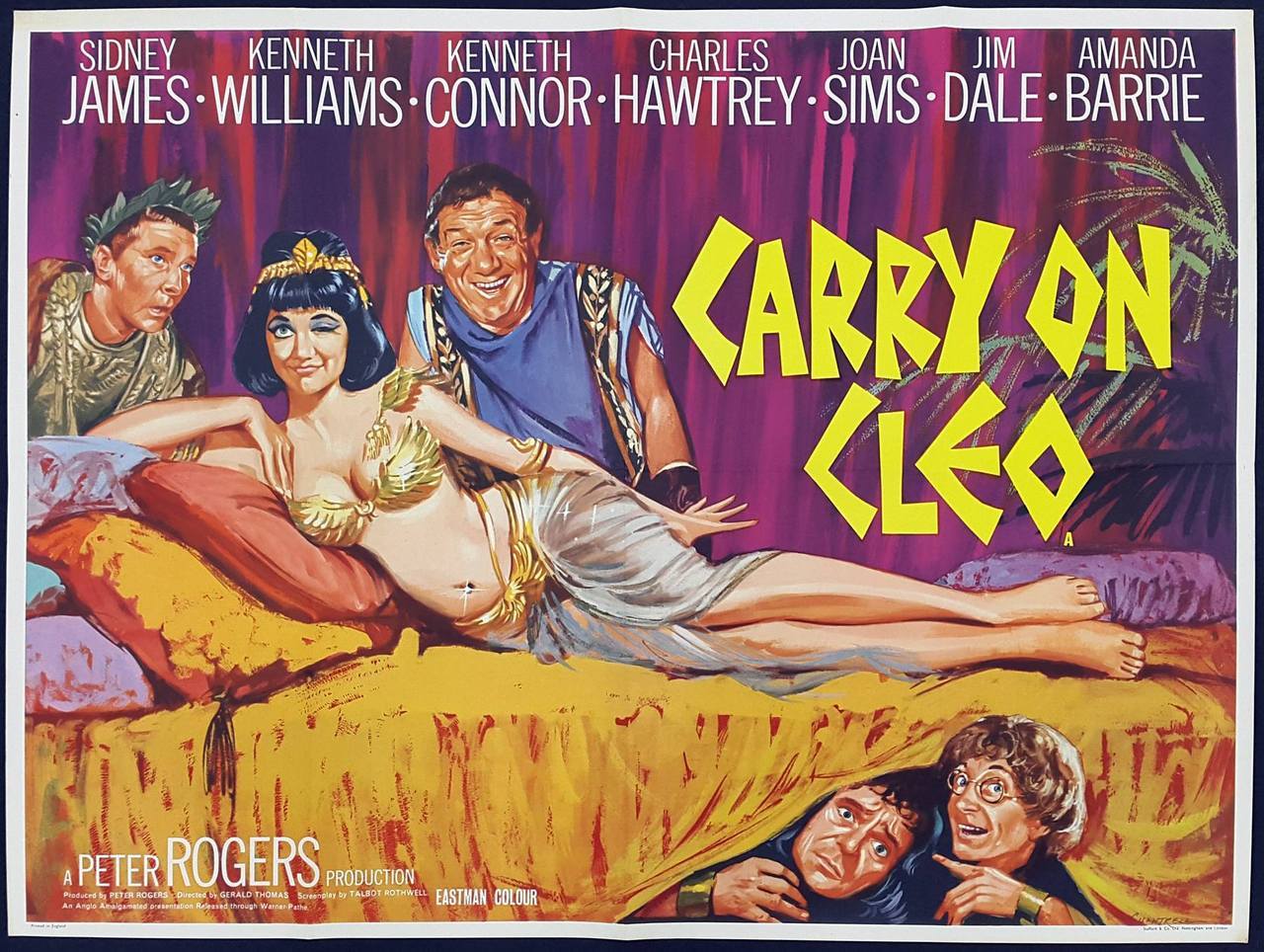
I asked Rick if the title of Hail Caesar was his deliberate nod of appreciation for the Romans, in confirming this to be the case, Rick also described that he had at one point considered the name Carry On Caesar!
Rick Priestley: Yes it was – I toyed with the idea of calling it ‘Carry On Caesar’ combining my love of Romans with my enthusiasm for Carry On films, but I figured this might actually create copyright problems for Warlord. Carry On Caesar was my working title for the game. At the time there were lots of games coming out that followed the title format ‘War and Conquest’ (that being one such) and I wanted something that stood out – that was memorable.
I asked Rick where he felt the world of historical wargaming in 28mm scale stands today, and where he think it’s headed.
Rick Priestley: Well there is so much stuff coming out all the time from new manufacturers in plastic, resin and metal that I’m sure historical gaming is guaranteed to thrive for many years yet. Quite whether the emphasis will be on recreating historical battles or assembling realistic historical armies or something more abstract I don’t know – it is a broad church and all the better for that!

With the Hail Caesar rulebook containing seven Battle Reports and covering different periods of time, I was interested to know which Battle Report/ scenario was Rick’s favourite.
Rick Priestley: I enjoyed the Kadesh game – Egyptians against Hittites. It was a battle we’d fought many times, including with Warhammer Ancient Battles back in the day. It’s a classic wargame because you have both armies starting from multiple positions – which suits Hail Caesar rather well. It’s also a game played lengthways down the table to a large extent, which is always fun with the potential rapid movement in Hail Caesar that can easily go either way. But my favourite game is probably the Border Raid – Romans against Britons – and that’s a very similar game in many respects. The Romans have to mount a raid upon a Celtic position whilst the Britons can be reinforced from different positions. It’s a game I’ve played several times with different players, and it always goes close to the wire. When we played for the write-up the Romans were put to flight by the astonishing Celt fanatics led by Alan Perry (Alibongus) in one of those classic ‘couldn’t stop rolling 6’s’ moments that you get now and then in a wargame.
There is a selection of wonderful quotes included in the Hail Caesar rulebook, such as “Give me a safe commander – not a rash one!” (Augustus Caesar according to Suetonius), I asked Rick if it was himself that found such quotes to include.
Rick Priestley: When we put Black Powder and Bolt Action together it was easy to find quotes and anecdotes, and John Stallard contributed quite a few – John reads a lot of personal accounts of warfare, which is ideal for that kind of thing. When it came to Hail Caesar I wanted to replicate that approach – but it’s a lot harder to find pithy quotes or suitable anecdotes from ancient authors: they tend to bang on at length or the language just doesn’t translate in an inspiring way. When I’m reading ancient sources with a view to writing wargames rules I make notes – for example The Histories of Count Zosimus includes an account of the infamous ‘Palestinian clubmen’, so I have a note that includes that section of text plus comments regarding Zosimus’. It’s interesting following the trail of things like this – because often the oldest or most closely contemporary accounts don’t support the popular ‘wargames’ interpretations as well as you might hope – but I digress. I just raked through my notes, followed up using my library or online, which is often more convenient these days. Sometimes I’d blend two different translations to get a quote that was a little pithier or which made better sense. Old translations would often use terms like ‘halberd’ as a translation of ‘xyston’, for example, where a more accurate version would be ‘spear’ or possibly ‘lance’. Similarly, with Caesar, some of the older translations use terms like ‘brigade’ for ‘legion’ and so on, with anachronistic military terms that rather spoil the sense of the piece.
Games such as Black Powder, Pike & Shotte and Hail Caesar have been purposefully created with the element of having fun and enjoying a social event the main priority. Whilst these games can be played in a more competitive fashion, other systems, such as Bolt Action, are perhaps better suited. I asked Rick for his position on competitive/ tournament games, and whether or not he is at all competitive when playing.
Rick Priestley: I suppose we would all prefer to win rather than lose – although often the best games are where both sides scent victory before the thing goes one way or the other. I have taken part in competition games but it’s not something I’m especially drawn to. Organised play does tend to revolve around competitions of one sort or another, and it will attract players who are especially competitive for that reason. However, a lot of players like to take part in organised play simply because they don’t have a large group of friends living close by with whom they can game regularly. I think for some folks the tournament weekend is a chance to get together with friends and play games, and winning or losing is secondary to that, so it’s not binary. Tournaments don’t have to be cut-throat, win-at-all-costs affairs, and social games can get quite competitive on occasions. I don’t feel I need to win a wargame to enjoy playing, but I prefer to play as part of a team that can share in celebration or commiseration win or lose.
Official website for Warlord Games HERE.
Official Warlord Games Facebook page HERE.
See also The Wargaming Wizard! A Talk With Rick Priestley… HERE.
See also Product Focus: Warlords Of Erehwon… Talking With Rick Priestley… HERE.
See also Warlord Games & More! A Talk With John Stallard (& Rick Priestley)… Part 6: Black Powder…. Here.
Elsewhere… Rock ‘N’ Roll Resurrection!!! Queenage Baby & Beyond: The Authorised Biography Of Jayne County…
Bastard, The Damned, The Lords Of The New Church & More: The Authorised Biography Of Brian James…
The New York Dolls, The Heartbreakers, Johnny Thunders & More: A Book About Johnny Thunders…
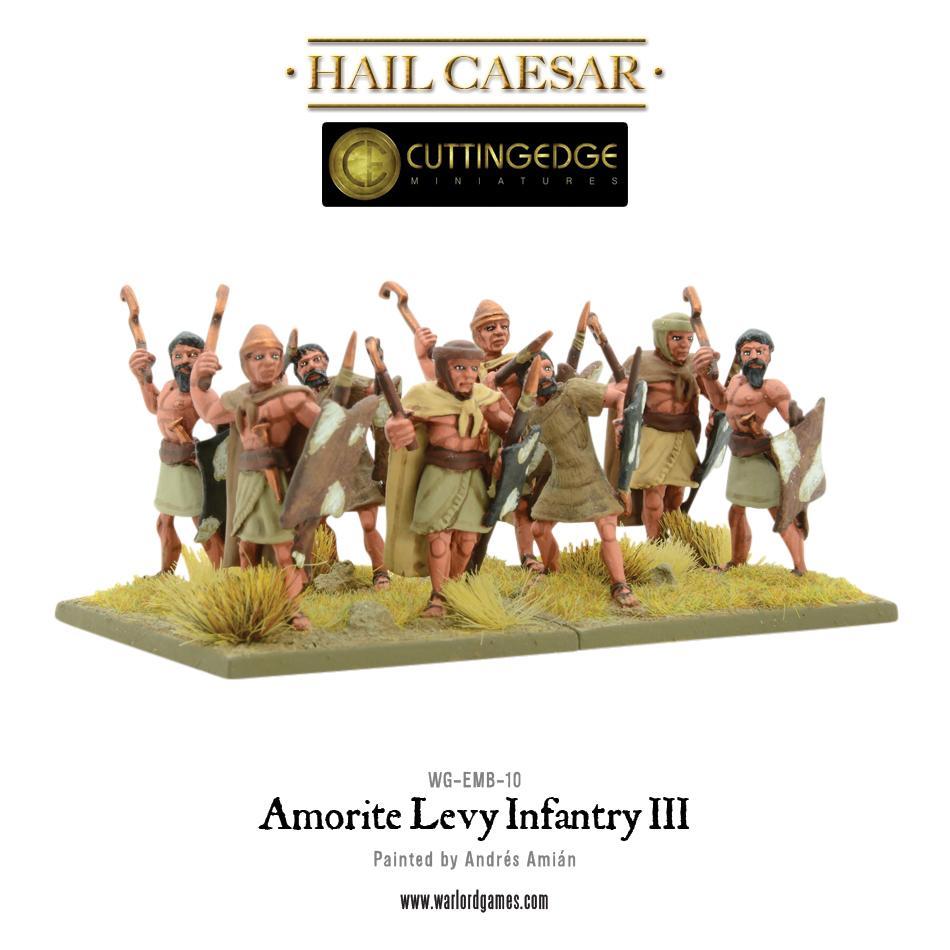







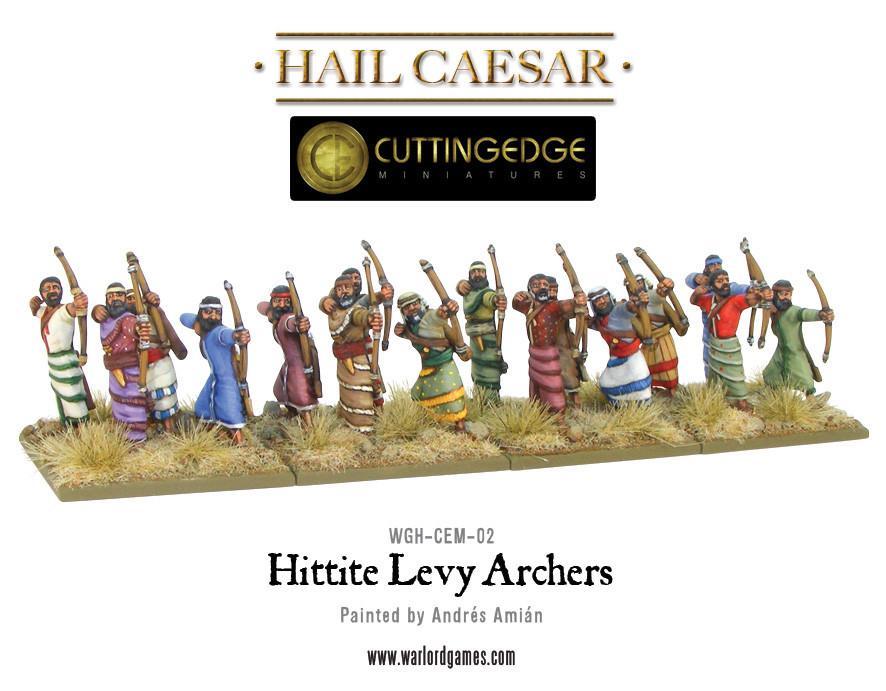

Another great article. I’ve recently seen a few video interviews with Rick and it’s his boundless enthusiasm that I love. He always comes across as someone who you’d love to meet and delve into his mind.
LikeLiked by 1 person